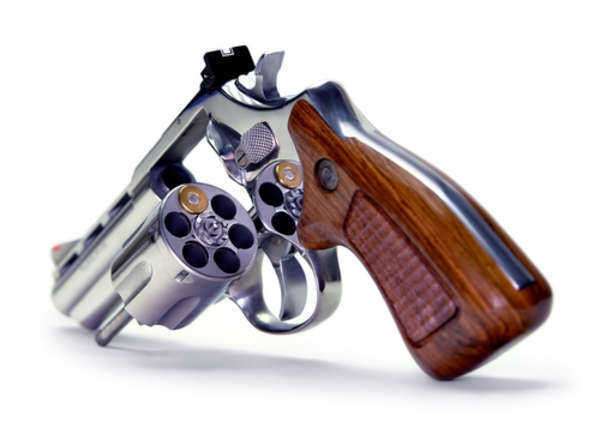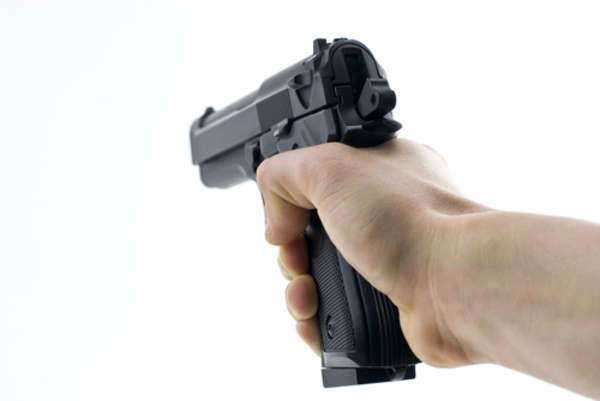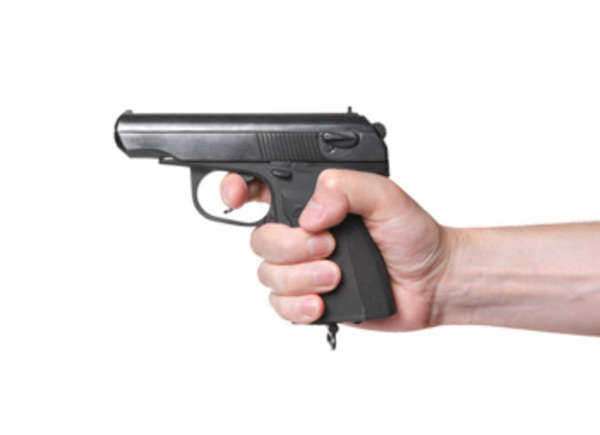What Are Some Handgun Concerns





Introduction
Handguns are among the most prevalent and versatile firearms in the world today. They come in a wide variety of types and categories, each designed for specific purposes and preferences. Whether you’re a firearm enthusiast, a law enforcement officer, or someone interested in personal defense, understanding the different types of handguns is essential. In this article, we’ll delve into the world of handguns, exploring their various categories and providing insights into their usage, history, and characteristics.
Chapter 1: The Basics of Handguns
Before diving into the different types of handguns, it’s crucial to understand the fundamental characteristics and components that define this class of firearms.
1.1 Handgun Definition
A handgun, also known as a pistol or a sidearm, is a firearm designed to be operated with one hand. Unlike long guns, such as rifles and shotguns, handguns are compact and portable, making them suitable for personal defense, law enforcement, and concealed carry.
1.2 Handgun Components
– Frame: The frame is the central component of a handgun and houses the trigger mechanism, barrel, and magazine. It provides structural support and defines the firearm’s size and shape.
– Barrel: The barrel is the tube through which the bullet travels when fired. It determines the handgun’s accuracy and range.
– Slide: The slide covers the barrel and moves back and forth during the firing cycle, ejecting spent cartridges and chambering new rounds.
– Trigger: The trigger is the part of the handgun that the shooter pulls to release the firing mechanism.
– Grip: The grip is the handle of the handgun, allowing the shooter to hold and control the firearm.
– Sights: Sights are devices, often consisting of front and rear elements, that help the shooter aim accurately.
Chapter 2: Categories of Handguns
Handguns can be categorized into several types based on their action mechanisms, intended use, and design. Let’s explore these categories in detail:
2.1 Revolvers
Revolvers are one of the oldest types of handguns, known for their simplicity and reliability. They feature a rotating cylinder that holds multiple rounds of ammunition. When the trigger is pulled, the cylinder revolves, aligning a fresh round with the barrel.
– Single-Action Revolvers: In single-action revolvers, the shooter must manually cock the hammer before each shot. Pulling the trigger only releases the hammer to strike the firing pin.
– Double-Action Revolvers: Double-action revolvers allow the shooter to both cock the hammer and fire by simply pulling the trigger. This makes them quicker to operate than single-action revolvers.
Revolvers are popular for their ruggedness and ease of maintenance. They come in various calibers and are often used for personal defense and sport shooting.
2.2 Semi-Automatic Pistols
Semi-automatic pistols, also known as autoloading pistols, are the most common type of handguns in use today. They use the energy generated by firing a round to eject the spent cartridge, chamber a new round from a detachable magazine, and cock the firing mechanism for the next shot.
– Single-Action Semi-Automatics: In single-action semi-automatics, the hammer must be manually cocked before the first shot. Subsequent shots can be fired in double-action mode, where pulling the trigger both cocks the hammer and fires the gun.
– Double-Action Only (DAO) Semi-Automatics: DAO semi-automatics have a consistent trigger pull for each shot, making them popular for concealed carry due to their safety features.
– Striker-Fired Semi-Automatics: Striker-fired pistols use a striker mechanism instead of a hammer. They are known for their consistent trigger pulls and are commonly used by law enforcement agencies.
Semi-automatic pistols offer higher ammunition capacities compared to revolvers and are widely used for self-defense, law enforcement, and target shooting.
2.3 Derringers
Derringers are small, compact handguns known for their simplicity and concealability. They typically have two barrels and can hold one or two rounds of ammunition. Derringers are often used as backup guns or for concealed carry due to their small size.
– Single-Shot Derringers: These derringers can only fire one round before requiring manual reloading.
– Multi-Barrel Derringers: Some derringers have multiple barrels, allowing for multiple shots before reloading.
2.4 Pocket Pistols
Pocket pistols are compact semi-automatic handguns designed for easy concealed carry in a pocket or small holster. They are typically chambered for smaller calibers and are popular among individuals seeking a discreet self-defense option.
Chapter 3: Calibers and Ammunition
In addition to the various handgun categories, it’s important to understand the different calibers and types of ammunition used in handguns. Caliber refers to the internal diameter of the barrel and influences factors such as recoil, bullet velocity, and stopping power. Some common handgun calibers include:
– .22 LR (Long Rifle): Often used for target shooting and small game hunting due to its low recoil.
– 9mm Luger: One of the most popular handgun calibers for self-defense and law enforcement due to its manageable recoil and capacity.
– .45 ACP (Automatic Colt Pistol): Known for its stopping power, it’s favored by some for self-defense.
– .38 Special: Used in both revolvers and semi-automatic pistols for self-defense.
– .357 Magnum: Known for its powerful performance, often used for self-defense and hunting.
– .380 ACP: A compact caliber suitable for concealed carry.
– .40 S&W (Smith & Wesson): Used by law enforcement agencies for its balance of capacity and stopping power.
Understanding ammunition is crucial for safe and effective handgun use. Different types of bullets, such as full metal jacket (FMJ) for target shooting and hollow-point (HP) for self-defense, serve distinct purposes.
Chapter 4: Handguns in History
Handguns have played significant roles in history, shaping military tactics, self-defense, and law enforcement. Here are a few historical highlights:
4.1 Early Hand Cannons
The earliest known handheld firearms, known as hand cannons, date back to the 13th century. These early firearms used black powder and resembled small cannons. They marked the beginning of handheld ranged weapons that would eventually evolve into modern handguns.
4.2 The Colt Revolver
Samuel Colt’s invention of the Colt revolver in the 19th century revolutionized handgun technology. It featured a rotating cylinder that could hold multiple rounds, making it a game-changer in terms of firepower.
4.3 The 1911 Pistol
The Colt M1911, designed by John Browning, became the standard-issue sidearm for the United States military in 1911. This
semi-automatic pistol played a pivotal role in both World Wars and remains a classic firearm to this day.
Chapter 5: Legal and Regulatory Aspects
Handgun ownership and use are subject to strict regulations and laws in many countries. It’s important to be aware of these legal aspects before acquiring or using a handgun. While specific regulations vary widely, they often cover:
– Background Checks: Most jurisdictions require background checks to ensure that individuals purchasing handguns do not have a criminal record or mental health issues that would disqualify them.
– Permit and Licensing: Many places require individuals to obtain permits or licenses to carry concealed handguns in public.
– Storage and Transportation: Laws often specify how handguns should be stored and transported to prevent unauthorized access and ensure safety.
– Prohibited Persons: Certain categories of individuals, such as felons and individuals subject to restraining orders, are typically prohibited from owning or possessing handguns.
Understanding these regulations is crucial to staying within the bounds of the law and ensuring responsible handgun ownership.
Chapter 6: Handguns for Personal Defense
One of the primary reasons individuals choose to own handguns is for personal defense. Handguns offer a compact and effective means of protecting oneself and loved ones in case of threats. Here are some considerations for using handguns for personal defense:
– Training: Proper training is essential to ensure safe and effective use of handguns. Seek out certified firearms instructors and practice regularly.
– Home Defense: Handguns can be used for home defense, but safe storage and quick access are crucial to prevent accidents.
– Concealed Carry: If you choose to carry a concealed handgun in public, ensure you are in compliance with local laws and receive the necessary training.
Chapter 7: Handguns for Sport Shooting
Handguns are also popular for sport shooting, offering a challenging and enjoyable pastime for enthusiasts. Some of the popular shooting sports that involve handguns include:
– Target Shooting: Precision shooting at stationary targets, often involving various distances and shooting positions.
– IDPA and USPSA: International Defensive Pistol Association (IDPA) and United States Practical Shooting Association (USPSA) competitions involve dynamic shooting scenarios, emphasizing speed and accuracy.
– Bullseye Shooting: A precision shooting sport where competitors aim for the center of a target at fixed distances.
– Action Shooting: Fast-paced shooting competitions that incorporate movement and shooting on the move.
Participating in these sports requires skill development, dedication, and adherence to safety protocols.
Chapter 8: Handguns for Law Enforcement and Military
Handguns are essential tools for law enforcement officers and military personnel. They serve as secondary weapons to long guns and are often carried as backup firearms. Key considerations for law enforcement and military use of handguns include:
– Training: Extensive training is required to ensure officers and military personnel can effectively use handguns in high-stress situations.
– Duty Holsters: Holsters are designed to securely retain handguns while allowing quick and reliable access.
– Ammunition Selection: Law enforcement and military agencies carefully choose ammunition that balances stopping power with over-penetration concerns.
Chapter 9: Future Trends and Innovations
The world of handguns continues to evolve with advancements in materials, design, and technology. Some notable trends and innovations include:
– Modularity: Handguns with interchangeable components, such as grip modules and slides, offer increased customization options.
– Optics Integration: More handguns are designed to accommodate red dot sights and other optics for improved accuracy.
– Polymer Frames: Polymer-framed handguns have become increasingly popular due to their lightweight construction and durability.
– Smart Gun Technology: Ongoing research explores incorporating biometrics and electronic safety features into handguns.
As technology progresses, we can expect further improvements and innovations in the world of handguns.
Conclusion
Handguns are a diverse and essential category of firearms, serving a wide range of purposes, from personal defense and sport shooting to law enforcement and military applications. Understanding the various types and categories of handguns, as well as their historical context and legal regulations, is essential for responsible ownership and use. As the world of handguns continues to evolve, it’s crucial to stay informed about the latest trends and innovations in this field. Whether you’re a seasoned firearms enthusiast or someone considering their first handgun purchase, knowledge is the key to safe and responsible handgun ownership.
Handguns are firearms that can be operated and carried with only one hand. A unique weapon, the handgun is among the most popular form of firearm in the United States-of the 193 million guns in the United States nearly 38% of them are handguns. As a result of its prevalence, the handgun is the most violent firearm in circulation-75% or 7,575 of the 10,100 murders in the United States were committed via handguns in 2005.
There are currently five different classifications of handguns, all possessing unique characteristics in terms of rate of fire, loading technique, and caliber used. The five different types of handguns are:Single shot pistols, multi-barreled pistols, revolvers, semi-automatic pistols, and automatic pistols. Although many handgun experts believe there is a distinction between pistols and handguns, for this purpose we will be using the terms synonymously.
Single shot pistols
The earliest form of handguns, single shot pistols, are regarded as the most basic form of the weapon. In essence, the single shot pistol is like a miniature hand-held cannon, discharging one explosive round of ammunition followed by a manual reload. These handguns were generally labeled as “pocket pistols” because of their ability to conceal. Although archaic, single shot pistols are still available today for big game hunting purposes. Popular models include the Derringer, and the Thompson/Center Encore.
Specs for the Thomson/Center Encore hunting pistol.
Break action chamber that accommodates a wide variety of cartridges.
Calibers range from .22 rim fire to .45/70.
Barrel lengths are generally 10 to 14 inches but some bigger models come with a 16 1/4 inch barrel.
All T/C single shot pistols come with either iron sights or optical sights for more advanced hunters.
Multi-barreled pistols
Were produced shortly after the creation of the single shot pistol. Multi-barreled handguns were created to enable the operator to fire more than one shot without having to reload. Famous examples of multi-barreled handguns include:pepper box guns, the .577 Snider, and the .476 Enfield.
Revolvers
Revolvers were created in the 19th century and accomplished to the task of multi-loading a handgun through a rotating cartridge-filled cylinder. These cylindrical chambers contained anywhere from five to eight rounds depending on the make. The cylinder would rotate each time the trigger is depressed, filling the chamber with a fresh round. When compared to other types of handguns revolvers are more accurate and possess powerful forms of ammunition.
Revolvers come in two different forms:single action and double action. The single action revolver is the western style, and requires a thumb cock before it can be fired. The double action is a typical police style weapon and can be fired in succession with a harder trigger depression. This form of handgun has a long and rich history in wars, crime fighting, and the wild west. Popular makes of revolvers include the .44 magnum, .45 Long Cult, and the .357 Magnum.
Specs for the .44 magnum
The .44 Magnum fires a large, heavy bullet at a high velocity
Bullets are approximately 11 mm in diameter
The accuracy of the gun is very good however it can only shoot about 100 yards before dropping off
Holds 6 high powered rounds
Semi-automatic hand guns
The next innovation following the revolver, a semi-automatic pistol uses the energy of a discharge to automatically reload the chamber for a subsequent shot. Semi-automatic handguns are either gas powered, or used recoil energy to reload the next shot. These pistols are used by infantrymen in the United States military as a sidearm. Popular models include the Smith and Wesson .45 ACP, the TEC-9, and the Desert Eagle.
Specs for the 92 Beretta
First produced in 1975
Weighs 34 ounces
8.5 inches in length
4.9 inch barrel length
Feeds through a detachable magazine which can contain between 10-20 rounds
Uses 9X21 mm ammunition
Automatic hand guns
Automatic hand guns or machine pistols are capable of rapid and consecutive fire with one simple depression of the trigger. Usually machine pistols have selective fire, which alternate between fully automatic shots and 3 round burst per trigger squeeze. These forms of handguns are rare, and difficult to control because of their lightweight and ability to rapidly fire. A popular example of the machine pistol is the Beretta 93R.
Specs for the Beretta 93R
Designed in the late 1970s, the Beretta R is meant for military or police use
This form of automatic gun fires 3 bursts per trigger squeeze making it more accurate
Can fire 1100 rounds per minute